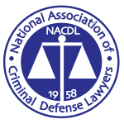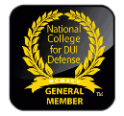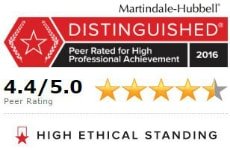Folks around the courthouse commonly refer to ours as a “CSI World”, referencing the popular television series and its proclivity for demonstrating how perfectly executed scientific techniques solve crimes. In reality however, scientific techniques are not perfect and “crime labs” rarely execute them to perfection. Some flaws in technique, including instrumentation, are significant, some are not. The same axiom applies to execution.
I just returned from a week long training session in gas chromatography (GC). The session took place in Chicago at one of the world’s top GC training labs. GC is the most oft used method of analysis, around the globe, for identifying and measuring volatile substances such as ethanol (the alcohol we drink) and other “common drugs of abuse” (that term does not imply that these substances are always or even usually abused).
The instructors were Dr. Harold McNair (one of the pioneers of gas chromatography and the first person to earn a PhD in GC in the United States) and Dr. Lee Polite (protégé of McNair and owner of Axion Laboratory). Pharmaceutical companies, energy companies, the FBI, ATF and other entities from around the world send their personnel to Axion for training and invite the Axion team to their venues for training and quality assurance evaluations.
Gas Chromatography Vs. Intoxylizers
I have previously written and lectured extensively on problems with breath alcohol testing in OUI cases. I have focused on flaws, shortcomings if you will, regarding the instrumentation (Intoxylizers) as well as the element of human/operator error. I wrongfully assumed (you all know what that means) that GC analysis was relatively (relative to breath testing) “perfect”. Well, obviously there’s no such thing as “relatively” when it comes to perfection.
While the instrumentation component is incomparable between the gas chromatograph and the far inferior Intoxylizer, the potential for human / operator error in GC analysis is indeed much greater. The reason: there are infinitely more critical steps involved in proper GC analysis as compared to the proper administration of an Intoxylizer test. Hence, there are many more opportunities for human error. Don’t get me wrong; there are plenty of chances for normally flawed humans to mess up an Intoxylizer test. But the number of those opportunities pales in contrast.
Aside from the innumerable potential lapses in protocol and methodology in the collection and storage of blood and urine samples (things upon which I previously focused mostly), the actual GC analysis is fraught with at least as many potential errors of significance. The chromatographer must make accurate and precise measurements, chose the proper equipment and controls or standards for each analysis, recognize highly technical, nuanced signs and make the correct adjustments, record and interpret data appropriately, utilize sophisticated software correctly and have a detailed high-level understanding of the gas chromatograph and the science of analytical chemistry. Likewise, the lab must have well-defined strict protocols in place. Those protocols must be backed by rigorous validation studies. They MUST be followed in every single analysis. The brevity of this column does not allow for a detailed itemization of the foregoing, but you get the picture.
It’s not enough to have a really cool sounding machine and operators “acting” like they know how to use it to “solve crimes” in the real world. That only works on t.v.
If you have been charged with OUI, a drug crime or any other offense, call me for a free consultation at 207-879-4000.
Disclaimer: This article is intended to provide general, not specific, information about Maine law. The publication of this article does not constitute an attorney-client relationship between the author(s) and the reader(s).





